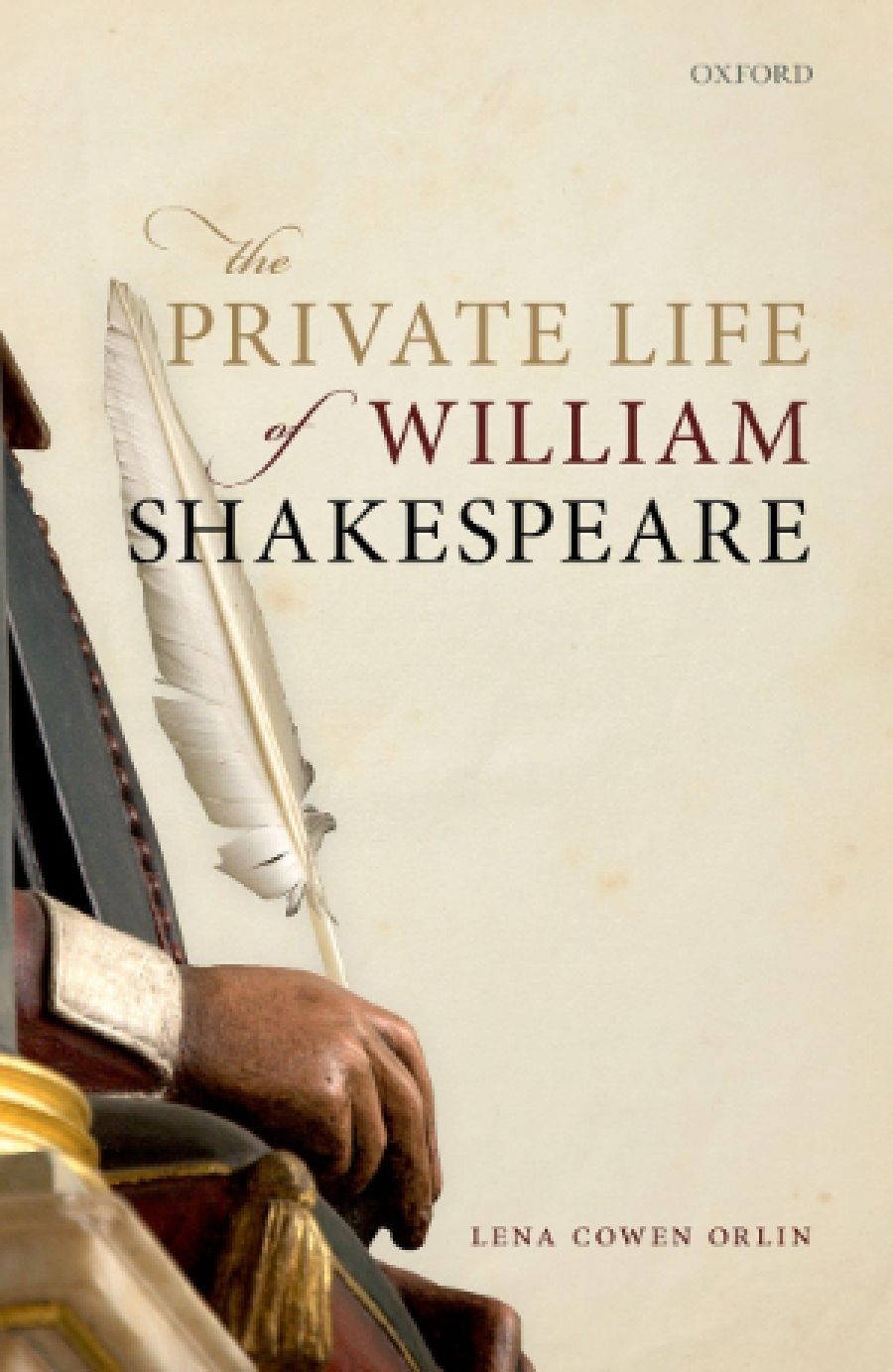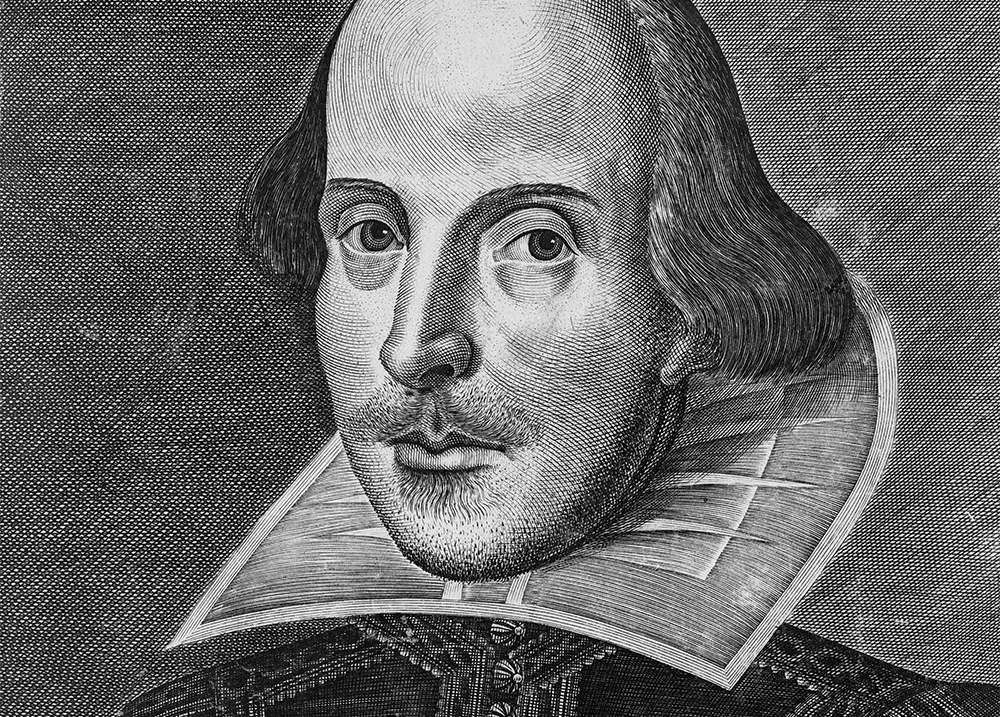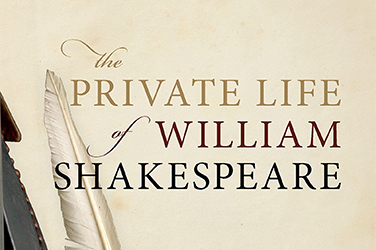
- Free Article: No
- Contents Category: Shakespeare
- Review Article: Yes
- Article Title: A Stratford man
- Article Subtitle: The enterprising young Shakespeare
- Online Only: No
- Custom Highlight Text:
The basic facts of William Shakespeare’s life – his baptism, early marriage, three children, shareholder status in his playing company, acquisition of a coat of arms, purchase of New Place in Stratford, and his death in 1616 – are well known. Is there anything new to say?
- Article Hero Image (920px wide):

- Article Hero Image Caption: A portrait of William Shakespeare engraved by Martin Droeshout in 1623 (Wikimedia Commons)
- Alt Tag (Article Hero Image): A portrait of William Shakespeare engraved by Martin Droeshout in 1623 (Wikimedia Commons)
- Featured Image (400px * 250px):

- Alt Tag (Featured Image): David McInnis reviews 'The Private Life of William Shakespeare' by Lena Cowen Orlin
- Book 1 Title: The Private Life of William Shakespeare
- Book 1 Biblio: Oxford University Press, £30 hb, 442 pp
- Book 1 Readings Link: booktopia.kh4ffx.net/5bLnVD
Lena Cowen Orlin examines a series of seminal moments in the writer’s private life that reveal a Shakespeare ‘who knew what he wanted to do with his life’. A hallmark of her biography is the prioritisation of ‘evidence clusters’ about ‘cognate lives’, with a strict focus on the personal and an insistence that ‘historical documents and accounts should be subjected to as close a reading as any play or poem’. Indeed, in the case of Shakespeare, who, Orlin observes, ‘did not write autobiographically’, close reading of historical documents is more important than straining to decipher significance in his plays and poems, which are conspicuous in their near absence in this biography (hence ‘private life’). Therein lies the paradox and challenge of Shakespearean biographies, of course: ‘The scope for literary interpretation appears infinite; the resources for life information are limited.’
Orlin is interested in ‘parallel lives’, including that of Shakespeare’s father. With John Shakespeare’s rise in status as alderman came responsibilities, which John failed to discharge from early 1577 onwards, when his chronic absence from council meetings began and his financial situation degenerated: ‘The collapse of his father’s enterprise was the defining event of [Shakespeare’s] private life; from it, all else followed.’ But earlier, in 1569, the young William Shakespeare would have witnessed travelling players attend his own father in the Guildhall’s Upper Hall, a space repurposed for theatre by John Shakespeare as the borough’s chief officer for the year. Orlin calls it a ‘formative experience’ for the five-year-old Shakespeare. As he came of age, however, Shakespeare ‘confronted a life in trade just as that of his tradesman father failed’: a fork-in-the-road moment for young William.
Orlin proposes that Shakespeare may have set his impending life in trade to one side strategically and afforded himself new possibilities with the ‘positive life choice’ of wilfully entering into a marriage with Anne Hathaway in 1582. Because Shakespeare was just eighteen and Hathaway apparently pregnant before their marriage, scholars have assumed that theirs was a shotgun wedding to which William was an unhappy or unwilling party. Orlin sees a different possibility: ‘that there was purpose in the union, in part because its consequence was his translation to London’, where the glovemaker’s son could instead become a playwright. If Shakespeare had begun a term of indenture as an apprentice in Stratford (perhaps to a butcher), his marriage would have broken the terms of any apprenticeship (which required ‘undivided allegiance’ to a master, to the exclusion of a spouse). Instead, Shakespeare became self-determining.
Orlin turns to parallel examples, including the remarkably fulsome documentation for Stratford leatherworker’s son and butcher’s apprentice William Trowte, to ‘help normalize the gaps in Shakespeare’s that have occasionally misled biographers’. Such exploration of cognate lives makes more intelligible the Shakespeares’ experiences of the law, finances, and civic and family life. The antiquary John Aubrey may have been right that Shakespeare arrived in London in 1582, aged eighteen, almost immediately after having married. Orlin helps us see that Shakespeare was more likely fleeing an apprenticeship than a marriage; the marriage had liberated him. Even the seeming peculiarity of William and Anne procuring an episcopal licence to marry away from Holy Trinity Church in Stratford can be explained without the conventional assumption of a clandestine ceremony: marrying elsewhere would allow John Shakespeare, who avoided Holy Trinity (where he risked arrest for his debts), to attend his son’s wedding.
Even after Shakespeare moved to London, he ‘maintained currency in local matters’, seemingly continuing to style himself as a Stratford citizen when communicating with those back home, when acquiring property, or preparing his taxes. To better understand how Shakespeare escaped his family’s history of debt, Orlin turns to Richard Quiney (regular commuter between Stratford and London) as ‘another of Shakespeare’s cognates’, and to Richard’s wife, Elizabeth Quiney, whose well-papered life is of interest here for clarifying ‘how a Stratford household could prosper when the head of household was absent in London’. Elizabeth ran a household of sixteen, collected rent, made and sold malt, took responsibility for financial matters, sold wine, ran events for the community, and was even a notable philanthropist. Although the Stratford records of the Shakespeares seem ‘obstinately trivial’, Orlin sets about ‘making biographical sense of them’ via affinities with the Quineys, and the wives in particular. The Shakespeares’ hoarding of ten quarters of grain in 1598 likely points to a household of female staff whom Anne would have trained not just in malt production but in brewing. Anne ‘balanced cash accounts’, may have hosted market vendors, and certainly housed guests at New Place (Thomas Greene rented there for six years). In short, we ‘should know Shakespeare’s wife to have been a partner in building his estate’. Grasping this helps elucidate how the Shakespeares could amass £960 worth of property at a time when Philip Henslowe was paying playwrights £4 to £6 for a new play at the Rose playhouse.
Orlin’s most stunning provocations are left till last, and concern the bust of Shakespeare in Holy Trinity Church, which she argues is the most ‘autobiographical’ artefact of Shakespeare that we possess. Shakespeare likely met the sculptor, newly identified here as Nicholas Johnson (not, as commonly supposed, his brother Gerard), and commissioned the monument himself. Orlin not only identifies polychromed demi-figures with ‘a cushion terminating the torso’ (like Shakespeare’s) as a peculiar type of memorial style for monuments, but one made more significant by the fact that the ‘epicentre of the cushioned funerary monuments was Oxford University’; an unexpected revelation, given that Shakespeare is famously known not to have received a university education. Shakespeare was said (by Aubrey) to have routinely lodged with William Davenant’s parents at their tavern in Oxford on his way from London to Stratford. Taken in conjunction, this evidence cluster leads Orlin to ‘picture Shakespeare participating in the intellectual culture of Oxford’, suggesting that, although he may not have attended university formally, he ‘found another way of learning’: by frequenting the Oxford taverns that were the precursor of college common rooms, where his bearing of news from London would have placed him at the centre of learned discussion. What Orlin establishes as likely being a self-commissioned funeral monument in the Oxford style is thus a final act of ‘self-determination that is a through-line of his private life’.
Orlin’s painstakingly detailed recontextualisation of evidence pertaining to Shakespeare’s private life reveals a family man in touch with his Stratford roots, who exercised self-determination from a tender age, forging his own path out of his socio-economic lot and, in what was perhaps his greatest creative achievement, imagining a life and career for himself that scarcely seemed possible. The private life of William Shakespeare was key to his success.


Comments powered by CComment